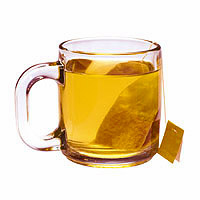health guides
Tea

Varieties
All teas, excluding herbal varieties, come from the tea plant, Camellia sinensis. Variations in flavour, colour, and strength are based on factors in growing, harvesting, and processing. Tea leaves fresh from the bush are harsh and bland. Processing methods largely determine the end flavour of the tea. Teas may also be blended to create variations on flavours, and may be flavoured with other ingredients, such as jasmine or bergamot. Black, green, and oolong are considered the basic types of teas, but thousands of varieties exist.
Black tea is the most common form of tea worldwide. It is prepared from green tea leaves that have been allowed to oxidize, or ferment, to form a reddish brew.
Oolong tea is a lightly fermented tea, between green and black tea on a continuum.
Green tea is an unfermented, dried tea, widely drunk worldwide and known for its fresh taste and health benefits.
White tea is the uncured and unoxidized tea leaf.
Herbal tea—technically not “tea” at all—uses a blend of dried plant flowers, stems, roots, or leaves for a hot brew. Yerba maté, made from an Argentinian evergreen shrub, is a popular herbal tea.
Copyright © 2024 TraceGains, Inc. All rights reserved.
Learn more about TraceGains, the company.
The information presented in the Food Guide is for informational purposes only and was created by a team of US–registered dietitians and food experts. Consult your doctor, practitioner, and/or pharmacist for any health problem and before using any supplements, making dietary changes, or before making any changes in prescribed medications. Information expires December 2024.


 We are proud to announce that
We are proud to announce that  As the market evolves, customers increasingly request a wider variety of omega-3 options for their lipid...
As the market evolves, customers increasingly request a wider variety of omega-3 options for their lipid...  Maintaining healthy glucose levels is crucial for preventing metabolic conditions like diabetes,...
Maintaining healthy glucose levels is crucial for preventing metabolic conditions like diabetes,...  Looking at formulating a new vitamin blend? Discover
Looking at formulating a new vitamin blend? Discover 







































